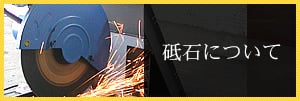Term
| Meaning
|
Solidity
| Shows the degree of strength of the binder that holds the abrasive grains. Generally referred to as hardness, but the hardness of the abrasive grains J (soft) -M (slightly soft) -S (standard) -T (hard) |
Self-sustaining action
| The wear of the abrasive grains increases with each work (cutting), and due to cutting resistance, the abrasive grains fall off when the holding limit of the bond (binder) is exceeded, and new abrasive grains (cutting edges) are created. It is performed by repeating this self-sustaining action.
|
concentration
| Represents the number of abrasive grains contained in the grindstone.
When the concentration ratio is 100: 25% of the grindstone deposits are abrasive grains. The number is small → There are few abrasive grains Manufacture / use (processing) possible / recommended range: Concentration ratio 15-150 |
Sludge
| Work shavings (fine chips) generated during honing.
|
Cutting resistance
| The force applied when the abrasive grains try to scrape off the work.
|
granularity
| A unit that indicates the size of the abrasive grains. It is represented by # (number), and the closer the number is to 1, the larger the abrasive grain (coarse grain), and the larger the number, the smaller the grain size (fine grain). The number is small → coarse (coarse grain) |
tool
| Represents all cutting tools, holders, etc. used when processing a work piece.
Whetstone: A cutting tool that actually does work (processing) Grindstone stand: Grindstone holder Mandrel: Fixes the grindstone stand and expands the grindstone Auxiliary tool (bar shape) *There are various types of whetstones, from one whetstone to multiple (2 to 10,...) whetstones, with dimensions that match the work, processing conditions, etc., and there are also whetstone stands and mandrels to match them.
|
Abrasive grains
| A general term for highly hard granular or powdery substances used for cutting, grinding, and polishing. As a cutting edge, it plays an important role in cutting workpieces.
|
Amount of protrusion of abrasive grains
| The amount per grindstone that protrudes (heads are protruding) from the surface of the grindstone (bond surface).
Large abrasive grains → Large amount of protrusion Small abrasive grains → Small amount of protrusion |
Bond (binder)
| An object that holds (fixes) abrasive grains. Processing process, work material,
It can be used properly according to various factors such as hardness and shape. |
Pre-processing accuracy
| Precision before honing of the work piece. Shows surface roughness, roundness, takeover allowance, etc.
<The whetstone has a hard action = the sharpness gets worse> ・ Fine surface roughness ・ High hardness ・ Good roundness ・ Many payments |
work
| Workpieces and members.
|







